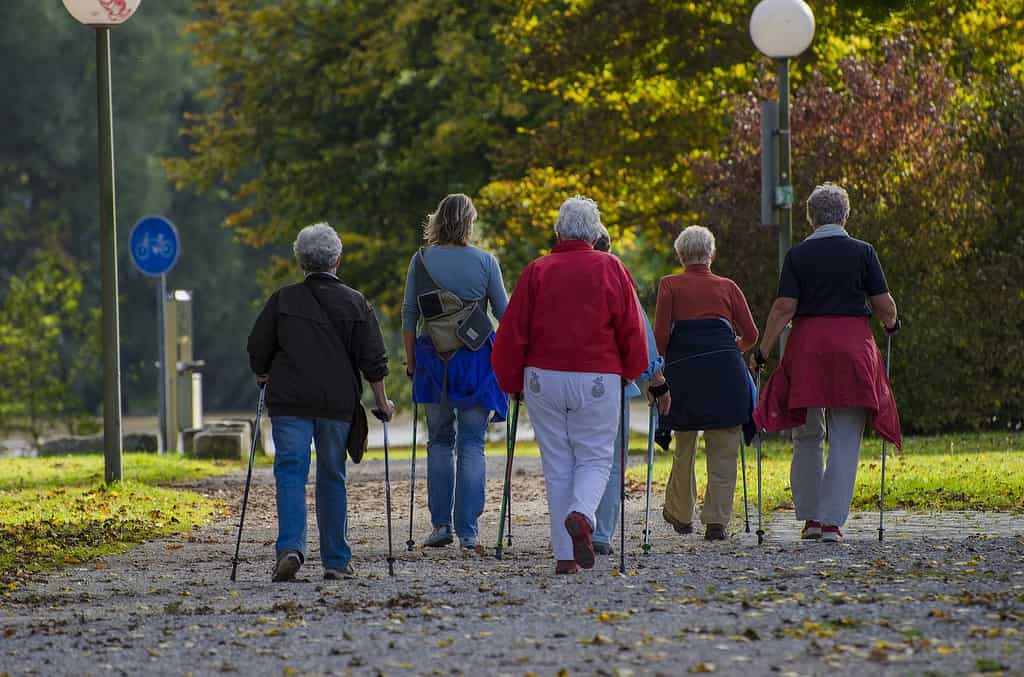
You may have heard that you need to walk 10,000 steps a day to live a long, healthy life. If you’re already in the 10k club, well kudos! However, for those of us who have trouble meeting this target day in, day out, there is some good news for the weekend warriors out there.
But first, it’s worth taking a closer look at this 10k figure — which is entirely made up by the way. The “10,000 steps” magic number can be traced back to the 1964 Tokyo Olympics, which proved to be prime time for marketing campaigns that advertise fitness products. One such campaign involved a pedometer called the manpo-kei, which literally means “10,000 steps meter” in Japanese. Since then, this catchy figure has been regurgitated time and time again as an antidote to the health risks of living a sedentary lifestyle, especially as we grow older.
However, although walking a lot is obviously good for your mind and body, it’s still not clear what is the bare minimum. One 2022 study from the University of Massachusetts found that the optimal sweet spot for reaping the most health benefits out of walking is about 7,000 daily steps. People who walk this much daily have a 50% to 70% lower risk of death from all causes compared to people who barely walk during their daily routine. The participants who walked more than 7,000 steps experienced diminishing returns.
But for many people, it’s not the 10,000 or 7,000 steps that scare them, but rather the daily grind that comes with it. One 2014 study, for instance, found that the average American clocks in only around 5,000 steps per day over an average span of 14 hours. Yet, a new recent study published in JAMA Network Open found that even walking just a few days a week can have meaningful health benefits — as long as you do so at a brisk pace.
According to the new study, people 20 years or older who briskly walked 8,000 or more steps on one or two days a week were 14.9% less likely to die compared to people who were sedentary. As the number of days of exercise increased, so did the associated reduction in all-cause mortality.
The study’s lead author, Kosuke Inoue of Kyoto University said: “Our findings suggest that for adults who face difficulties in exercising regularly, achieving the recommended daily steps only a couple days per week may have meaningful health benefits.”
Benefits beyond lower mortality rates
Brisk walking is a type of exercise that involves walking at a faster pace than normal, usually between 3 and 4.5 miles per hour. It’s a low-impact, low-cost activity that can be done just about anywhere, and it provides a variety of health benefits.
For their study, Inoue and colleagues from Japan and UCLA in California compared data from the 2005-2006 National Health and Nutrition Examination Survey with the National Death Index with mortality data up to 2019. The nearly 3,000 participants who formed a nationally representative sample wore a device with an accelerometer that recorded the number of daily steps for a week.
While previous studies have shown that individuals who regularly walk experience lower mortality rates, this new study provides additional information to clinicians and decision-makers. It encourages them to recommend a minimum number of days in a week that individuals need to achieve sufficient numbers of steps to reduce mortality risk.
But there are other health benefits associated with walking beyond lower mortality rates. Walking can help improve cardiovascular health by reducing blood pressure and cholesterol levels. Because power walking requires more steps per minute than your body is used to, your heart rate will increase. This means brisk walking also helps with weight management by burning calories and building muscle mass.
Another recent study published in February found that just 22 minutes of brisk walking a day protects against non-alcoholic fatty liver disease, a condition in which fat accumulates in the liver of individuals even though they don’t drink alcohol.
Making walking part of your daily routine
Walking is an easy way to incorporate physical activity into your daily routine. You don’t need any special equipment or gym membership – all you need is comfortable shoes and some motivation.
Here are some tips for making walking part of your daily routine:
- Start small: Begin with a short walk around the block and gradually increase the distance and duration.
- Find a walking buddy: Walking with a friend or family member can make it more enjoyable and keep you accountable.
- Make it fun: Listen to music, podcasts, or audiobooks while you walk to make it more enjoyable.
- Take the stairs: Instead of taking the elevator, take the stairs whenever possible to get some extra steps in.






